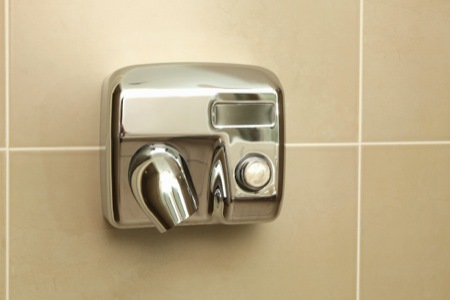

|
Chris Shaw
Editor |
The evolution of hand dryers
26 January 2016
We are always reminded to wash our hands properly and are told the consequences of what could happen if we don’t in terms of illness, especially in public places. But have you ever considered that the way you dry your hands is also important?

We have encountered a constant debate over the benefits of hand dryers versus using paper towels over the years. It is important to keep sanitary levels high to avoid the spreading of germs, especially during winter when there is a higher risk of illness.
The benefits of hand-washing have been obvious for centuries but when it comes to drying your hands, the innovative technology has only come about recently. It’s the little things that are important when it comes to health, and here we will look over the evolution of the hand dryer and how research and technology has enabled us to dry our hands properly.
The first hand dryers
The first attempt at inventing a hand dryer was in 1921 and it was named the ‘electric towel’, however it was a Chicago-based inventor named George Clemens who was credited with creating and popularising the hand dryer in 1948. Since then, technology surrounding electric hand dryers didn’t change much until the 1990s.
In 1993, Mitsubishi invented a hand drying style that blows the water off your hands as opposed to evaporating it with heat. These early hand dryers were noisy and could take up to a minute to dry your hands properly.
Hand dryers were released primarily to prevent the felling of trees that was required to make paper towels, but they required a lot more technology and development.
Updates and improvements
The original hand dryers required a touch button to start them, which spread bacteria. To eliminate this, automatic hand dryers were developed that worked off a sensor, removing the need for touching any part of the hand dryer.
On top of this, it was discovered that hot air enabled bacteria to spread around the restroom. Fans were improved and the temperature was altered to ensure this risk was minimised.
The arrival of the Dyson Airblade, although expensive, was an innovative and improved update on the automatic hand dryer. Highly efficient and fast-drying, the Airblade can dry your hands in 10 seconds.
Benefits of a hand dryer
In our opinion, buying and using a hand dryer has a number of benefits. Hand dryers essentially pay for themselves if they are used regularly and electricity does cost less than stocking up on paper towels. Maintenance is also lowered as the paper towels must be thrown away and replaced constantly.
Hand dryers can often be neat and compact, designed to sit on the wall of restrooms and are easily installed and maintained. Some high efficient jet hand dryers may even be a stand-alone unit.
Written by System Hygiene
- The value of waste makes qualifications even more valuable
- Top tips to improve customer service in a digital age
- Your social life is making you sick
- How to raise hand hygiene standards
- Halloween Cleaning Tips
- Hiring a cleaner? What to look for in a professional cleaner
- Water damage - What you should do first
- Changing your cleaning provider: how to improve standards
- How to sell your commercial cleaning company
- Keeping your hospital clean this winter
- No related articles listed





















